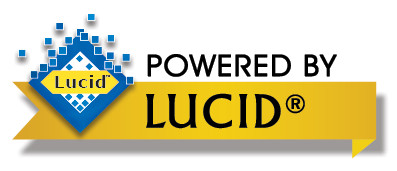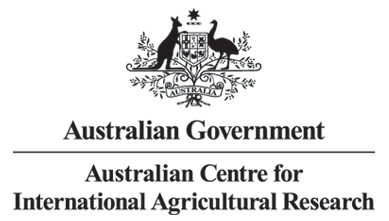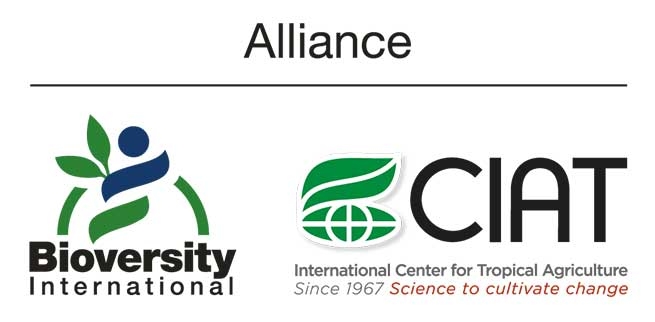
Guidelines for establishment and management of sown forages
Variety selection
In any forage development program, it is essential to select species that are not only well adapted to the soils and climate of the location in which they are to be used, but also to the farming system in which they are to be applied. Tropical Forages enables the user to select a small set of likely appropriate species to suit a specific purpose in a specified environment from about 170 better-known tropical and subtropical forages. Using LucidTM software, the selection proceeds via a sequential reduction process using some or all of 17 attributes which have been identified as offering the best discrimination. One or more of 15 options can be chosen within the first attribute, “intended forage use”, and thereafter the user can select from a range of other attributes to define the target environment (rainfall, temperature, and soils). Having generated the list of candidate species, the user can then move to the Fact Sheets to refine the selection using information and images presented in each sheet.
Seed sourcing and preparation
Sourcing seed: Non-commercial lines can be obtained from the various national and international genebanks, but quantities of seed provided will be extremely limited, possibly as few as 20‒50 seeds which will necessitate a delay of a year or more to increase small amounts to quantities necessary for experimental or developmental scale sowing (see “Making the most of small amounts of seed”). Larger amounts of seed of commercial varieties can be obtained from commercial outlets.
Authentic varieties: Be sure that the seed is really that of the variety you wish to plant. The only way to do this is to obtain seed from a reputable source.
Seed quality: Use only high-quality seed. Quality is measured in terms of purity and germination. Try to obtain a recent seed analysis statement for the seed you are planning to sow, since this will show these details. Purity is expressed in terms of the percentages of seed (sown variety, other crops and weeds), of inert matter (incl. pieces of straw, soil etc.), and of broken seed. Pay special attention to the weed seed in the sample since you do not want to introduce new, potentially serious weeds into your system. The analysis will also give germination details for the sample, which includes the percentage of germinable and hard seed. For legume seed, <50% viability (viable seed = germinable seed + hard seed that will germinate once scarified) indicates poor seed health, and mostly results in poor field establishment.
Grass seed purity: The units that are referred to as “seeds” in grasses may contain one or more caryopses (grains) in each unit. Sometimes no caryopsis is formed in the “seed” although it still appears to be complete, leading to considerable variation in germination between seed samples.
Seed storage: Viability of forage seeds can decline quite rapidly in storage, particularly under conditions of high temperature and humidity. If seed is to be stored for long periods, it should be dried thoroughly and stored in an air-tight container in a cool, dry environment e.g. in air conditioning, not in an unsealed container in a refrigerator where conditions will be cool but very humid. Attention to storage conditions is especially important for grass seed which does not have the benefit of an impervious seed coat (testa) that most legumes have.
Dormancy: Seed of some grasses (e.g. Megathyrsus maximus, Urochloa decumbens) is subject to post-harvest dormancy, which means that germination is low immediately after harvest, but improves over a period of 12 months or more. Seed of other species such as Paspalum atratum and P. lepton (syn. P. nicorae) do not develop this particular physiological dormancy and can be successfully sown soon after harvest. Germination test reports will show “Normal” and “Fresh ungerminated”, the latter being an indication of dormant seed numbers.
Legume seed scarification: The seed coat (testa) of legumes is often impermeable to water, thus slowing germination. Under natural conditions, this “hard-seededness” gradually breaks down with weathering, allowing the seed to germinate. This is an evolutionary survival mechanism to ensure there is a proportion of germinable seed at each germination event. However, too high a hard seed level (often over 90%) gives poor early germination in cultivation, when it is important for the sown species to establish quickly in order to compete with regenerating weeds. The level of hard-seededness can be reduced by cracking the seed coat without damaging the embryo. This can be achieved mechanically using sand paper or any other abrasive method, chemically with concentrated sulphuric acid, or with hot water or dry heat. Different methods are more appropriate with different species. It is best to ensure that the seed is scarified sufficiently to give about 50% germination in samples with high hard-seededness. This improves chances of early establishment, at the same time retaining some seed in reserve to germinate subsequently in case of an initial “false germination” (seeds germinate with soil moisture sufficient for germination but insufficient to support seedlings development).
Legume seed inoculation: Nitrogen is an important nutrient for plant growth and life generally, because it is a major constituent of all proteins, one of the main building blocks of all living things. While nitrogen comprises some 80% of the air we breathe, none of this atmospheric nitrogen is available directly to plants, and only becomes available in a combined form such as nitrate. Microorganisms play an important role in creating compound nitrogen from atmospheric nitrogen (nitrogen fixation). Rhizobia, the bacteria that live symbiotically in nodules on legume roots, are one such group of microorganisms. Although generally referred to as “rhizobia”, taxonomically they belong to a number of different genera the most common in forage legumes being Bradyrhizobium along with Burkholderia, Enisfer (Sinorhizobium) and Mesorhizobium. The legume family, Fabaceae, comprises over 750 genera containing a total of some 19,500 species, most of which form effective (i.e. nitrogen-fixing) symbiotic rhizobial relationships. Legumes that nodulate effectively with different strains of rhizobia are said to be “promiscuous”, and those that nodulate effectively with a single or few symbionts are said to be “specific” e.g. Sesbania rostrata with Azorhizobium, and Listia bainesii and Lotononis listii with Methylobacterium. Maximum benefit from legumes in agricultural systems is obtained by ensuring there is an effective strain of rhizobium present when the seed is germinating. Where there is doubt that a suitable strain of rhizobium is present in the soil, a culture of a known-effective rhizobium strain can be introduced, usually on the seed, in a process called inoculation. Commercial rhizobial cultures come in the form of peat cultures (a black powder), granular cultures and freeze-dried cultures. Slope cultures on agar gel of rarer strains can be obtained from some laboratories, but are more difficult to maintain. The rhizobia are very sensitive to UV light and so inoculated seed should be kept in a shaded, cool dry place prior to sowing and sown as soon after inoculation as possible. If seed is to be mixed with fertilizer, most types of which will kill the rhizobium, it should be covered with a thin layer of fine lime (CaCO3) powder while the glue layer is still moist, in a process called pelleting. On very acid soils or on others where molybdenum is likely to be deficient, and for species with a high Mo demand e.g. Neonotonia wightii, molybdenum trioxide (66% Mo) should be incorporated into the lime to deliver 150 to 300 g/ha (100–200 g Mo/ha). More detail on seed inoculation techniques is available from various websites e.g.:
- https://grdc.com.au/__data/assets/pdf_file/0017/90143/inoclegubackpocketguide_low-res-pdf.pdf.pdf
- https://grdc.com.au/__data/assets/pdf_file/0020/82082/grdc-booklet-inoculating-legumes.pdf.pdf
- http://www.agwine.adelaide.edu.au/research/farming/legumes-nitrogen/legume-inoculation/grdc_booklet_inoculating_legumes.pdf
If inoculum is not readily available, it may be best to choose only promiscuous legume species from the list provided by the Tropical Forages selection tool, since these will have the best chance of infection by effective native rhizobia.
Grass seed pelleting: Many commercial seed suppliers also coat or pellet grass seed, with claims regarding the benefits of coating, which may or may not be supportable in fact. While this is helpful with fluffy seed such as that of Bothriochloa, Chloris, Cenchrus and Dichanthium, for ease of handling and sowing, particularly with seed flow in machine sowing, it is not so essential for larger grass seed such as Urochloa. The most important factor is the number of viable seeds sown per unit area. People should be aware that it is possible that 1kg of coated seed may contain as little as 200 – 300g of seed, and sowing rates therefore need to be adjusted accordingly.
Land Preparation
The most important aims of land preparation are providing a moist environment for germination, and minimizing competition for the developing seedling of the sown species. For effective germination, it is best to have moist soil pressed closely against the seed, which is best achieved with a fine, firm seedbed. Sometimes cultivation is not possible due to the nature of the terrain, nor advisable, due to exposure to erosion hazard. In such cases, it is still important to eliminate competition from established plants, which is best achieved using a herbicide such as glyphosate. In erosion prone areas, it may be possible to divert runoff water away from the cultivated area to be sown using diversion banks, or to leave uncultivated contour strips of natural grass at intervals through the area to break the flow of water and minimise the chances of rill formation and soil loss.
Sowing
More pasture plantings fail through sowing too deeply than too shallowly. Seed size and soil texture are important in determining sowing depth – the smaller the seed and the heavier the soil, the shallower the planting depth. While there are some large-seeded forage species with 5,000 to 50,000 seeds/kg, most forages have small to minute seeds with 100,000 to >10 million seeds/kg (see individual Fact Sheets). In general, small seeds are best sown as close to the surface as possible, and larger seeds at 2 to 5 cm. In more arid areas, there may be advantage in planting more deeply to enable the developing seedling to access stored moisture more readily. However, a good practice is to broadcast seed on the surface, cover lightly by whatever means are available, and press the soil around the seed – best done with a heavy roller, or intensive livestock activity. Sowing in rows has the advantage of facilitating hand-, chemical- or mechanical-weeding between the rows of developing seedlings.
Grazing/defoliation management
The basic principles to observe are:
- Allow the new sowing to establish sufficiently before defoliating. While it was once suggested that it was best to leave the forage until it had set seed, this may not always be necessary. Sometimes it is advantageous to cut or graze early at 6 – 12 weeks post-emergence to encourage development of a suitable plant structure e.g. basal branching in legumes, multiple tillers in tussock grasses.
- Graze/cut as regularly as is feasible to obtain the optimum feed quality for the intended system e.g. lactating cows and young animals need better quality feed than fully-grown steers. Feeding value declines rapidly with age of regrowth, as increasing amounts of the indigestible polymer, lignin, are laid down in plant cell walls. This is particularly so in C4 grasses that constitute most warm season species. Although longer intervals between grazing/cutting may result in higher DM yields, animal production is usually poorer.
- Always maintain a green leaf residue after grazing/cutting. The rate of regrowth is initially directly related to the amount of green leaf remaining to intercept light and support photosynthesis. With severe cutting or heavy grazing, there is a delay in active regrowth while plants redevelop sufficient foliage to support growth.
- Residual green leaf is important in legumes, not only to support regrowth as in grasses, but also because the amount of nitrogen fixed is related to the photosynthetic leaf area on the plant. Nitrogen, an essential component of protein, drives the productivity of every livestock production system.
Fertility management
Fertilizer
There are 17 chemical elements essential for plant growth, but species vary in the amount of each of these plant nutrients required. Some nutrients are required in relatively large amounts, the macronutrients, and some in minute amounts, the micronutrients or trace elements. However, in general terms, plants grow only to the level set by the limiting nutrient (Liebig’s Law), regardless whether it is macro- or micro-nutrient e.g. if the soil is low in the macronutrient phosphorus (P) or the micronutrient copper (Cu), no amount of additional nitrogen or any other nutrient will make the plants grow beyond the level set by the amount of P or Cu available.
Soils vary in their ability to supply nutrients, and plants vary in their ability to extract nutrients from the soil. It is necessary to know the fertility of the soil, and the fertility demands of the forage varieties to be sown. Chemical analysis of the soil can give an indication of its fertility, and knowledge of the characteristics of the plant will help in determining fertilizer requirements e.g. Bothriochloa spp. usually have a low demand for N and P, while Panicum spp. have a high demand.
In general, the more important nutrients are:
- Legumes: P, S, and Mo.
- Grasses: N and P, and also K for some species (e.g. Setaria sphacelata), which have luxury uptake of this nutrient.
Deficiencies of these and other nutrients can often be detected by the presence of deficiency symptoms such as growth irregularities, leaf discoloration (yellowing, reddening), pattern necrosis, etc., full descriptions of which are available online. Tissue chemical analysis can also provide an indication of deficiency, but is very dependent on taking samples of particular phenology.
Typical levels of fertilizer nutrient required at planting and for maintenance are:
Levels of nutrient used will depend on soil type, species used, level of production required, and production system (cut-and-carry systems requires greater maintenance inputs than grazing systems).
+ Mo is an essential micronutrient for all plants, but is required in larger, but still trace, amounts for legumes, because it has a role in the symbiotic nitrogen fixation process. Grass-only pastures rarely require Mo fertilizer.
* applied every 3 years, but caution on Cu deficient soils.
Nutrient removal
It should also be remembered that in grazing systems, a proportion of the nutrients in the plant material ingested by the animal is returned to the soil in the dung and urine. However, in cut-and-carry feeding systems, large amounts of nutrient can be removed from an area and need to be replaced, either as organic animal waste or chemical fertilizers e.g. a grass pasture producing 20 tonnes of DM/ha/yr may contain 400 kg N and K, and 40 kg P.
Soil pH
The acidity of the soil is a critical factor in defining which plants are adapted to a particular environment e.g. Desmanthus virgatus is well-adapted to neutral to alkaline soils and does not grow well in very acid soils, while Centrosema acutifolium is well adapted to very acid soils and does not grow well in alkaline soils. Soil pH also influences the availability of soil nutrients e.g. soil phosphorus and molybdenum become increasingly less available and iron becomes more available as soil pH levels drop below about pH 6–6.5. On the other hand, aluminium and manganese become increasingly available as soil pH falls below about pH 5.5, with levels rising to a point where they can become toxic to many plants.
Weed management
Weeds compete with the sown species and reduce productivity of the pasture. They mostly result from inadequate land preparation or excessive grazing. If seed is sown into a weedy seedbed, the already-established weeds suppress the developing forage seedlings. If pastures are over-grazed, cattle select more palatable species and avoid others, leading to a build-up of unpalatable species i.e. weeds. Weeds at establishment can be controlled by hand-weeding, or spraying with selective herbicide. Non-selective herbicides such as glyphosate can be used if the sown species are in obvious rows. However, herbicide use should be seen as a last resort in controlling pasture weeds, the safest, cheapest and often most effective control is achieved through adoption of more lenient defoliation management practices. Judicious high mowing or rolling with a tyre roller can help to tip things back in favour of the sown species, particularly with annual weeds.
Further reading
Humphreys, L.R. (1994) Tropical Forages: Their role in sustainable agriculture. Longman Scientific & Technical, Essex, England. 414 pp. ISBN 0-582-07868-7
Klein H.-D., Rippstein G., Huguenin J., Toutain B., Guerin H., Louppe D., 2014. Les cultures fourragères. Éditions Quæ, Versailles, France, CTA, Wageningen, The Netherlands, Presses agronomiques de Gembloux, Gembloux, Belgium. 264 pp. ISBN 978-2-7592-2168-4. https://publications.cta.int/media/publications/downloads/1798_PDF.pdf
Loch, D.S. and Ferguson, J.E. eds. (1999) Forage Seed Production. Volume 2. Tropical and Subtropical Species. CABI Publishing, Wallingford, UK. 479 pp. ISBN 0-85199-191-2.
Roberge, G. and Toutain, B. eds (1999) Cultures fourragères tropicales. CIRAD Montpellier, France. 369 pp. ISBN 2-87614-361-5.
Skerman, P.J., Cameron, D.G. and Riveros, F. (1988) Tropical forage legumes. FAO Plant Production and Protection Series, no. 2, FAO, Rome, Italy. 692 pp. ISBN 92-5-102190-2.
Skerman, P.J. and Riveros, F. (1990) Tropical grasses. FAO Plant Production and Protection Series, no. 23, FAO, Rome, Italyt. 832 pp. ISBN 92-5-101128-1.


